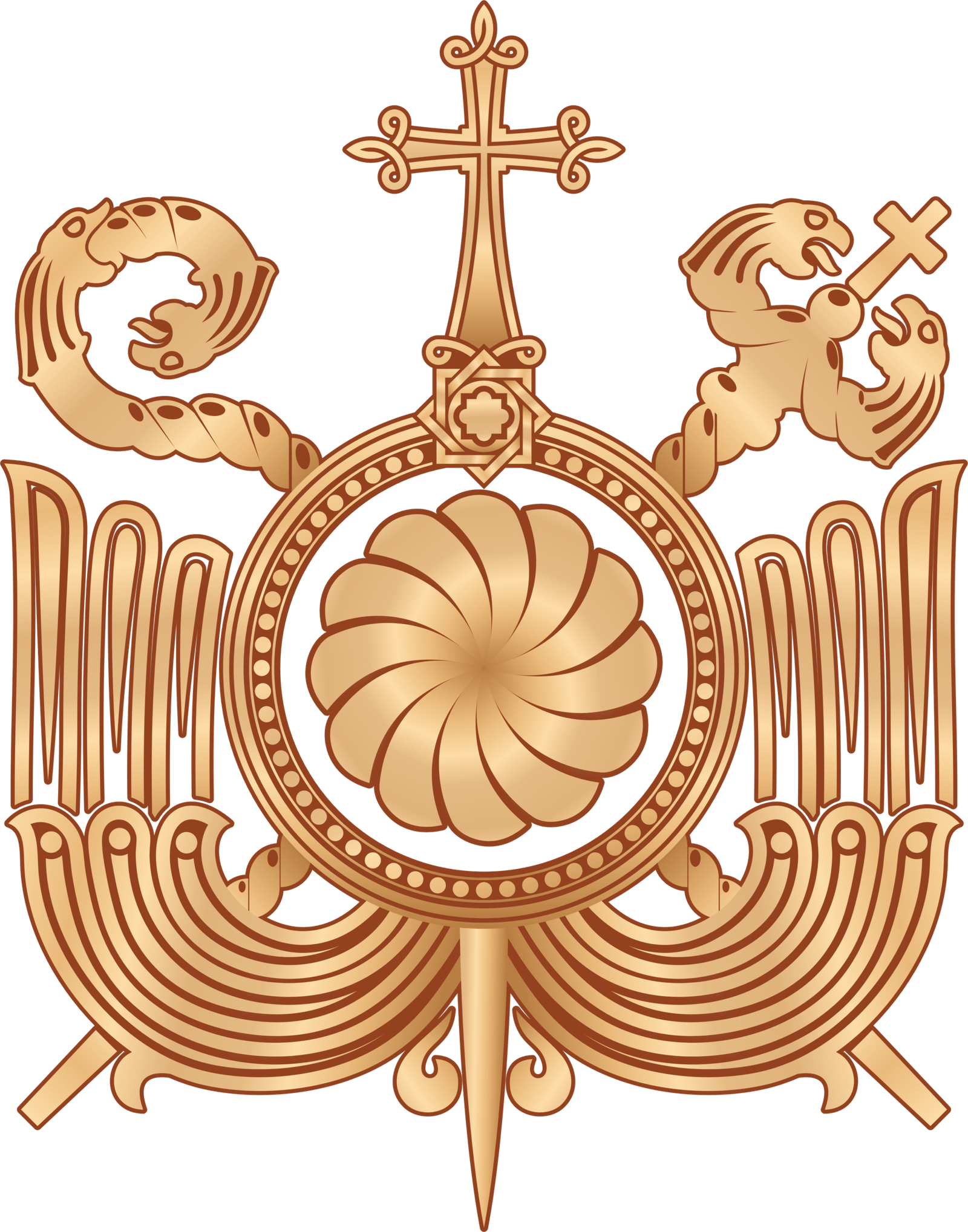Under the roof of the Artsakh Diocese of the AAHC Miniature Painting Center
Miniature painting, as a separate field of fine art, has been known since ancient times, but it flourished after the spread of Christianity, especially in Egypt, Palestine, Syria, and Armenia. Although miniature painting was inseparable from the handwritten book, over time it developed independently and, thanks to its richness, stylistic diversity, and original pictorial and colorful features, became a kind of national art branch.
The Armenian miniature is distinguished by its monumentality, the oriental type of faces in the images, traditional clothing, and ornamental art characteristic of Armenian culture. The gospels are most illustrated in Armenian manuscripts on Christian subjects, then the books of the Bible, other religious and ritual books, as well as books on history.
When Mesrop Mashtots created Armenian letters and Armenian handwritten books began to be written, Armenian miniature painting also developed along with education. Most of the numerous manuscripts that have come down to us from different centuries are decorated with miniatures. There are many centers of miniature painting in Armenia. The centers of Ani, Gladzor, Tatev, Nakhichevan, Artsakh, Vaspurakan, and others are known, each of which is characterized by a unique style of miniature painting and local traditions.
Today, in this difficult and decisive period for our people, when we are faced with many problems and challenges, with the vision of creating a small center of light in the Artsakh world, paying special attention to the restoration and preservation of spiritual and cultural traditions, the Artsakh Diocese of the AAHC, at the suggestion and blessing of the Primate of the Artsakh Diocese Bishop Vrtanes Abrahamyan initiates the opening of a miniature painting center.
It is planned to open a center for miniature painting, where they will teach:
- history of miniature Painting
- history of Armenian miniature painting
- Armenian ornament
- the art of writing
- miniature painting on paper
- miniature painting on wood
- miniature painting on parchment.
Purpose of the project:
- restoration of old traditions of miniature painting
- development of taste in the art of miniature painting
- Christian education of children through the art of miniature painting.
The program will be attended by 8-12 children aged 10-16 years.
It will be taught:
- miniature painting: 3 days a week for 2 hours
- history of miniature painting: 2 days a week for 1 hour.
Full program for 12 months.
- An annual exhibition, if possible, and commerce is planned to encourage project participants and ensure the continuation of the project.
- The Artsakh Diocese provides a landscaped area for the implementation of the project.
- The estimate of the project is attached.
MATERIAL COSTS
ESTIMATE
| № | Materials | Price | Quantity/unit | AMD |
|---|---|---|---|---|
| 1 | Paper | 4 000 | 1 box | 44 000 |
| 2 | Watercolor | 10 000 | 1 box | 110 000 |
| 3 | Tempera | 2 000 | 33 pcs. | 66 000 |
| 4 | Acrylic | 2 000 | 33 pcs. | 66 000 |
| 5 | Gold color | 5 000 | 1 box | 15 000 |
| 6 | Silver color | 5 000 | 1 box | 5 000 |
| 7 | Brushes | 2 000 | 33 pcs. | 66 000 |
| 8 | Wood | ⎯ | ⎯ | 66 000 |
| 9 | Parchment raw material | ⎯ | ⎯ | 44 000 |
| 10 | Desktop easel | 15 000 | 11 pcs. | 165 000 |
| 11 | Varnish | ⎯ | ⎯ | 33 000 |
| 12 | Pencils/eraser | 3000 | 11 sets | 33 000 |
| 13 | Table | 40 000 | 11 pcs. | 440 000 |
| 14 | Chair | 20 000 | 11 pcs. | 220 000 |
| 15 | Desk lamp | 10 000 | 11 pcs. | 110 000 |
| 16 | Closet | 80 000 | 1 piece | 80 000 |
| 17 | Electric miter saw | 100 000 | 1 piece | 100 000 |
| 18 | Computer | 300 000 | 1 piece | 300 000 |
| 19 | Printer IMAGE Class MF3010 | 110 000 | 1 piece | 110 000 |
| 20 | Wooden tablet | 3 000 | 11 pcs. | 33 000 |
| 21 | Palette | 2 000 | 11 pcs. | 22 000 |
| Total | 2 128 000 | |||
Salary
| Subject | Salary for 1 month / Armenian dram (AMD) |
|---|---|
| Miniature painting | 150 000 |
| Story of miniature painting | 50 000 |
| Total per month | 200 000 |
| Total per year | 2 400 000 |



